Nintendo Switch 2 Hands-On Preview Part 1: The Hardware and Mario Kart World
Does Nintendo have another hit on its hands?
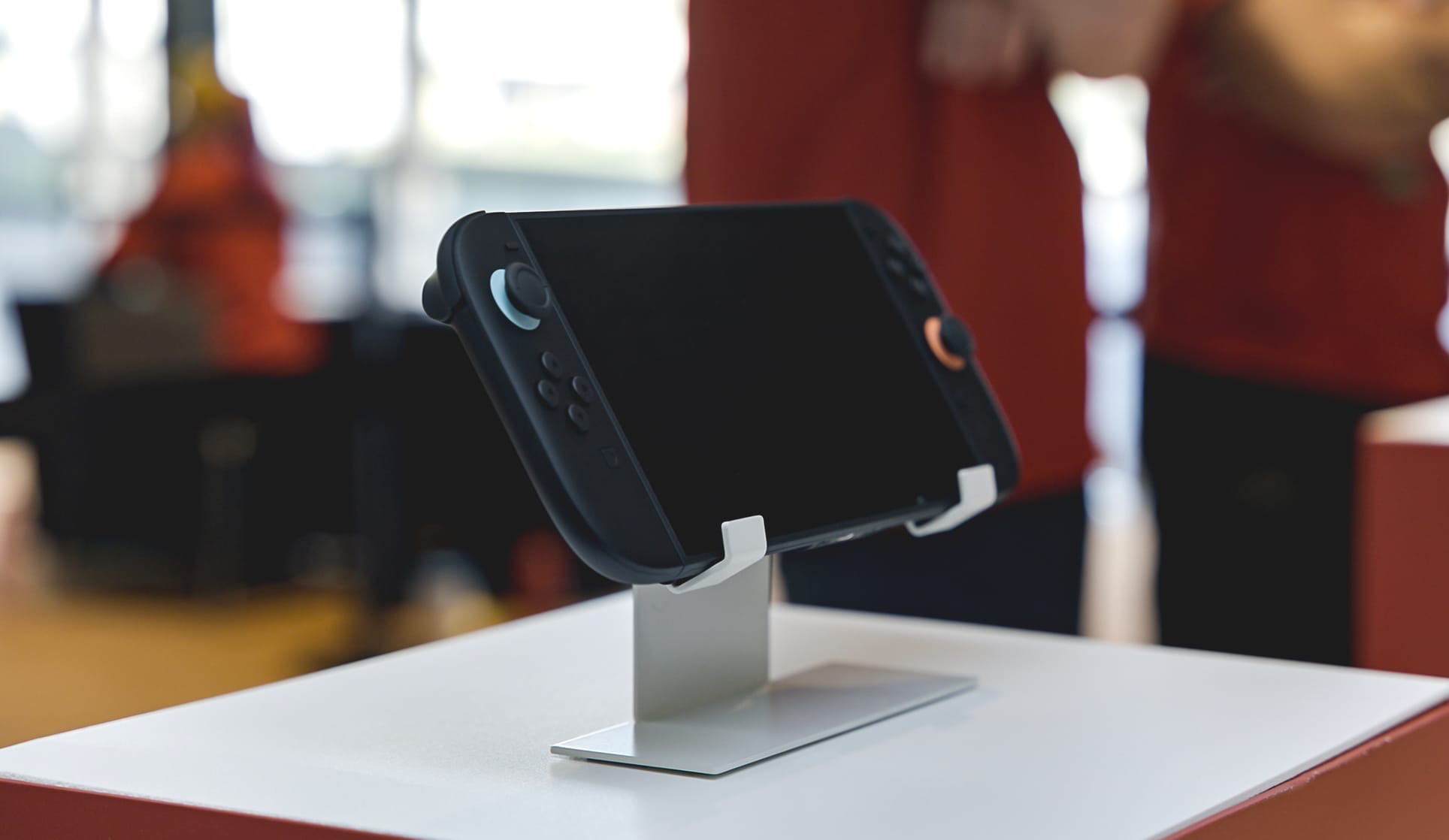
In a mere few weeks - and some eight years after the original Nintendo Switch launched - players around the world will finally be able to wrap their mitts around its sensibly-named-successor, the Nintendo Switch 2. Speculation about the new console heated up in the last few months in particular (although I personally share James O'Connor's view that the original Switch isn't "outdated" despite its age). At any rate, Nintendo put us all out of our misery in January with a slick reveal trailer.
Since then, there's been quite a lot of coverage about the console and several of its launch games - including some fantastic Nintendo Treehouse streams - so if you're reading this, you're probably aware of most of the fundamentals. I've read and watched much of the coverage myself. Despite this, I was keen to get a better sense of how the console and games actually feel, and especially curious to see if my experience would differ from others. Fortunately, I've just had this very opportunity: last week I was invited to a Nintendo Switch 2 Experience event here in Melbourne, where I got to spend four hours with the console and numerous games. The generous access really made a difference, too. It's one thing to play a quick demo for a couple of minutes, but it's another thing to play a demo several times or to experiment with a game's different modes over an extended session.
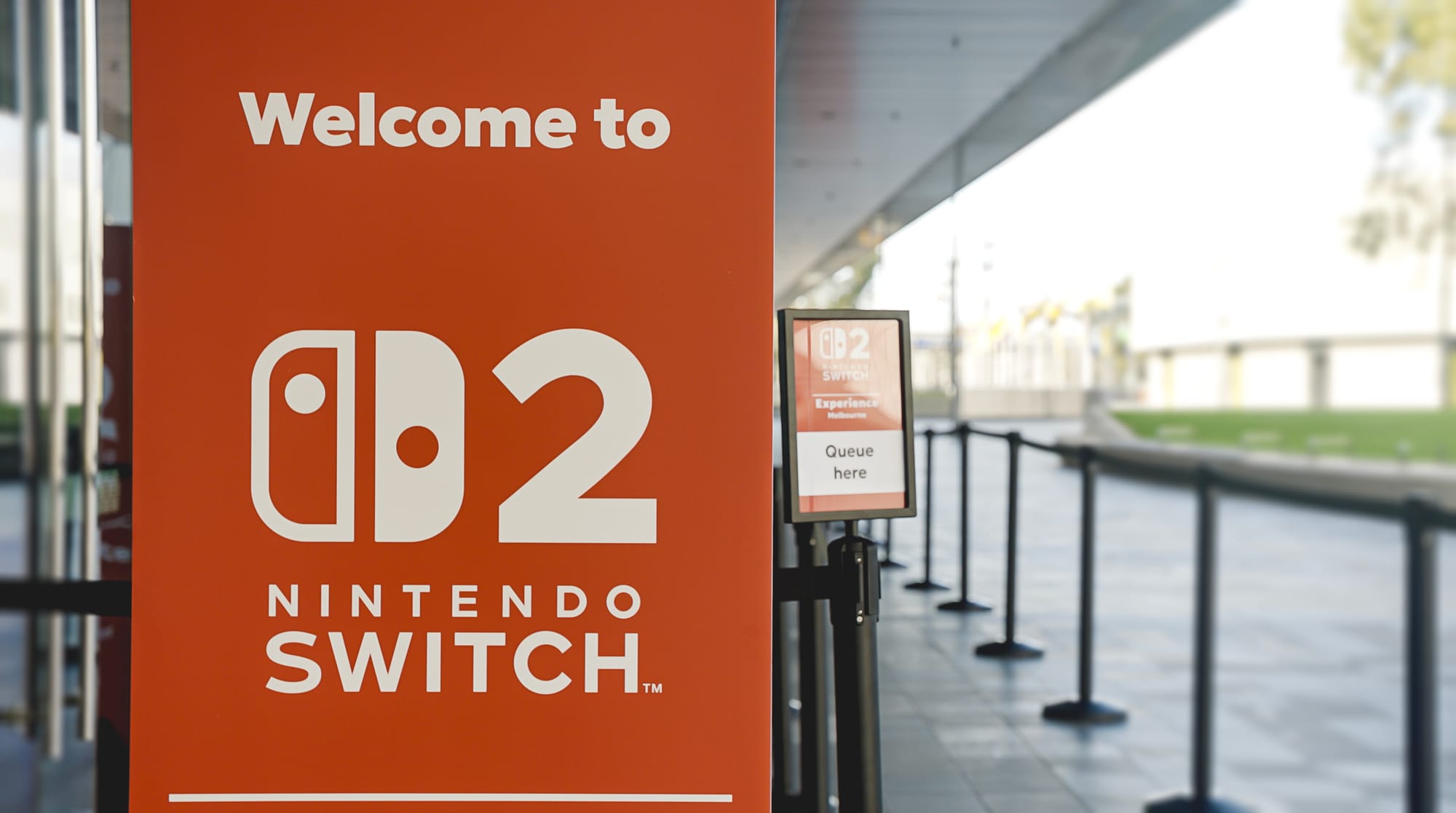
I did not end up playing every single game on offer; I tended to focus on the big heavy hitters or the games I was most curious about. I hope you enjoy these impressions. If you have any questions at all, please feel free to comment below; I'm more than happy to jump in and answer your questions if I can.
The Hardware
The Nintendo Switch 2 Experience felt like a mini-E3 of sorts (I mean, back when E3 used to be cool). Journalists, influencers, and retailers alike were grouped into separate four-hour sessions. As my group waited for our session to begin, we milled around an anteroom area dotted with display cases containing Nintendo Switch 2 hardware, accessories, and packaging. There were three plinths at one end with Switch 2 consoles just begging to be played. These machines were inactive, but they at least allowed me to get the console in my hands for the first time.
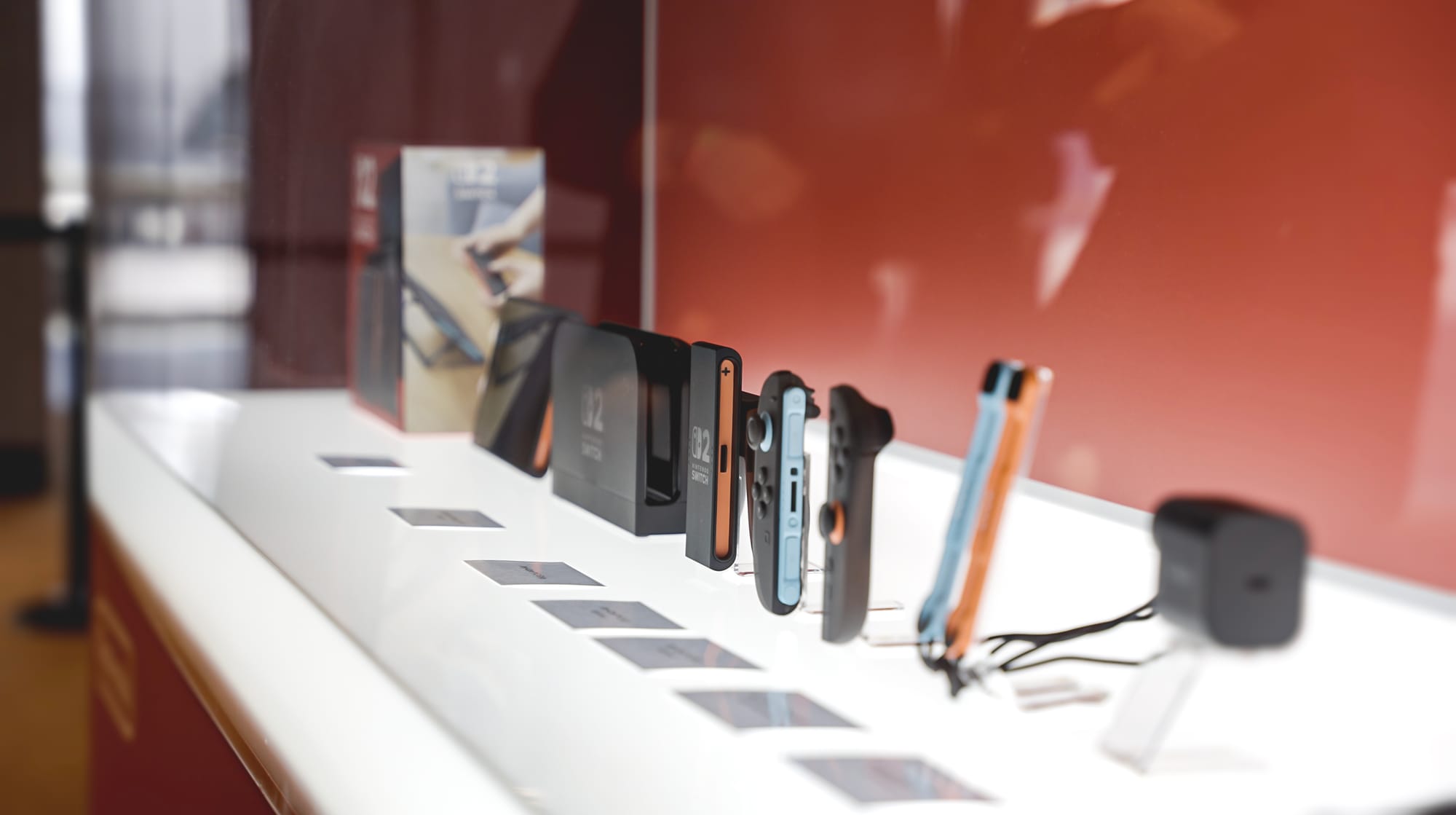
The Switch 2 hardware makes a strong impression right away. The overall footprint is larger than its predecessor (owing to its new 7.9-inch 1080p LCD screen - up from 6.2 inches on the non-OLED original). The Joy-Con 2 is also quite a bit larger than the first-gen controllers (more on that in a moment). What's notable here is that the height and width of the Switch 2 are significantly larger than both the original Switch and the OLED version yet the depth remains 13.9mm. This makes the Switch 2 feel rather svelte in a way that few other handhelds with similar specifications can claim.
But it's not just about the dimensions. You might have read a number of stories referencing the build quality of the Switch 2. I didn't quite grasp this until I actually held it in my hands for the first time. For context, I've owned both the Switch and Switch OLED model and I think you can see some clear build quality improvements between those two products. The original Switch was sturdy enough (if perhaps a little plasticky), and the OLED model (even without the new Joy-Con) felt like an evolution in terms of refinement.
The Switch 2 is on an entirely different level; it feels weighty, incredibly solid, and its finely textured surfaces almost feel like they're made entirely of metal rather than plastic. There's no creaking going on here whatsoever. I was genuinely surprised to discover that the Switch 2 feels more like a high-end piece of electronic equipment than a typical game console. I would go as far as to say that Nintendo has never produced hardware at this level of physical craftsmanship in its entire history. It's really a pleasure to hold and interact with.
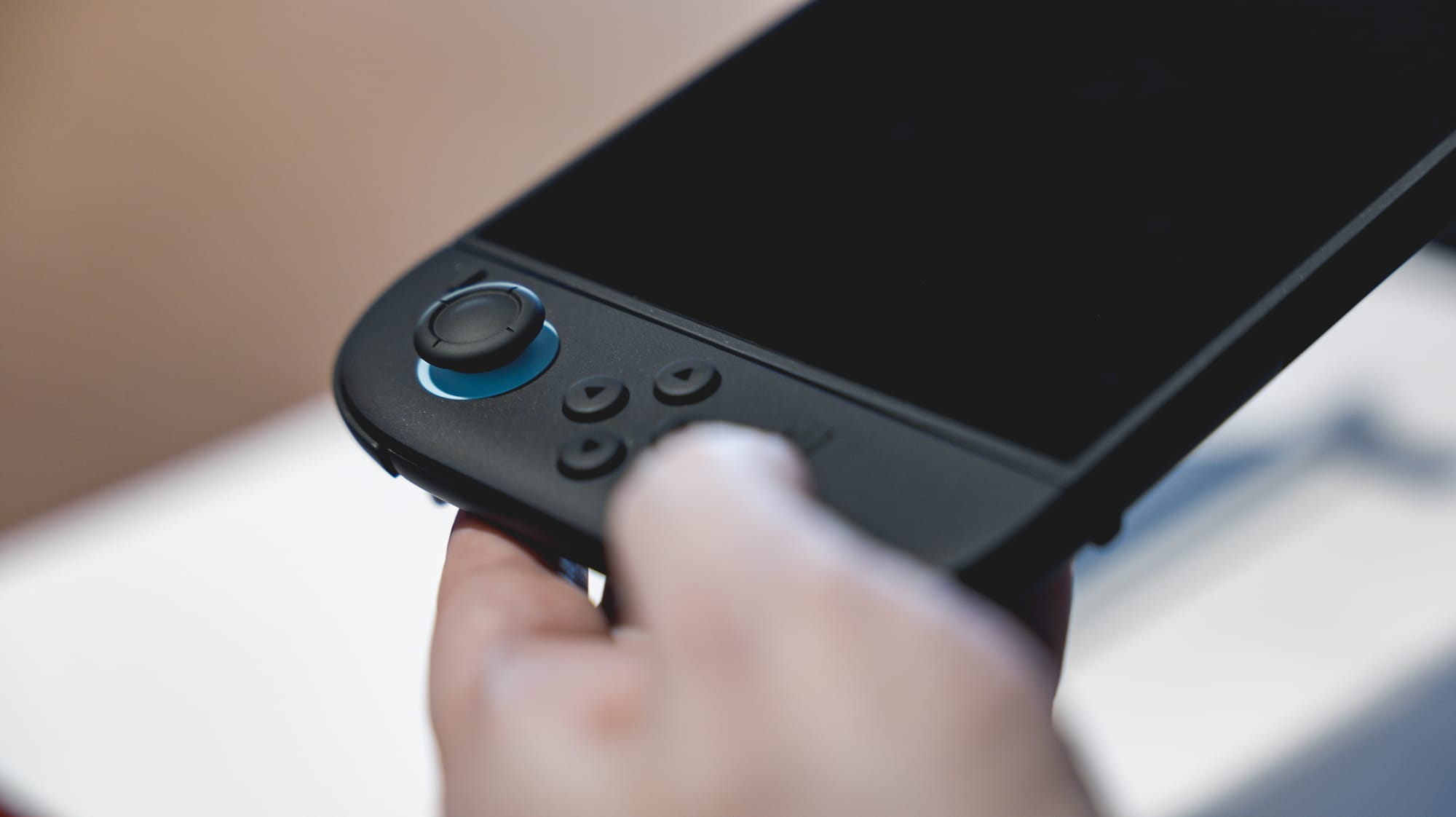
The Joy-Con 2 are a surprisingly large improvement over the original controllers in terms of quality, comfort, and overall usability.
Then there are the Joy-Con 2 themselves. The Joy-Con have always been such a crucial aspect of the Nintendo Switch experience, and this next-generation iteration feels like a dramatic improvement in so many respects. I have fairly small hands, but the larger Joy-Con 2 feel significantly more comfortable thanks to their bigger surface area. The face buttons are satisfyingly clicky and the shoulder buttons and triggers feel much more substantial this time around (I'm not certain about this, but the shoulder triggers seem to have a bit more travel in them - they feel good). The analogue sticks also appear to be a little larger and ever so slightly firmer in terms of movement. The end result is that they feel - for lack of a better word - "tighter", offering what feels like a bit more travel from the centre to the edge. Clicking them feels satisfying, too. The inner shoulder buttons (used when you turn the Joy-Con 2 on its side) are also larger and seem to have more travel as well. I'm not sure if Nintendo has addressed Joy-Con drift (which I actually never experienced despite owning many pairs of Joy-Con over the years), but in terms of overall proportions and tactility, I'd say the Joy-Con 2 are a surprisingly large improvement over the original controllers in terms of quality, comfort, and overall usability.
I used the Joy-Con in several configurations, including mouse mode - but I'll save my thoughts on mouse mode for the Metroid Prime 4: Beyond and Drag x Drive impressions. I also took the new Pro Controller for a spin. There's not too much to report on this front; like the new Joy-Con 2, the Pro Controller feels like an upgrade in terms of overall quality. The new shoulder buttons feel significantly better, and the controller itself features a more grippy "rubberised" texture - it's super comfortable, which is notable given that the original Pro Controller was pretty decent too. It also features customisable GL and GR buttons on the rear, helping it live up to its "pro" moniker.
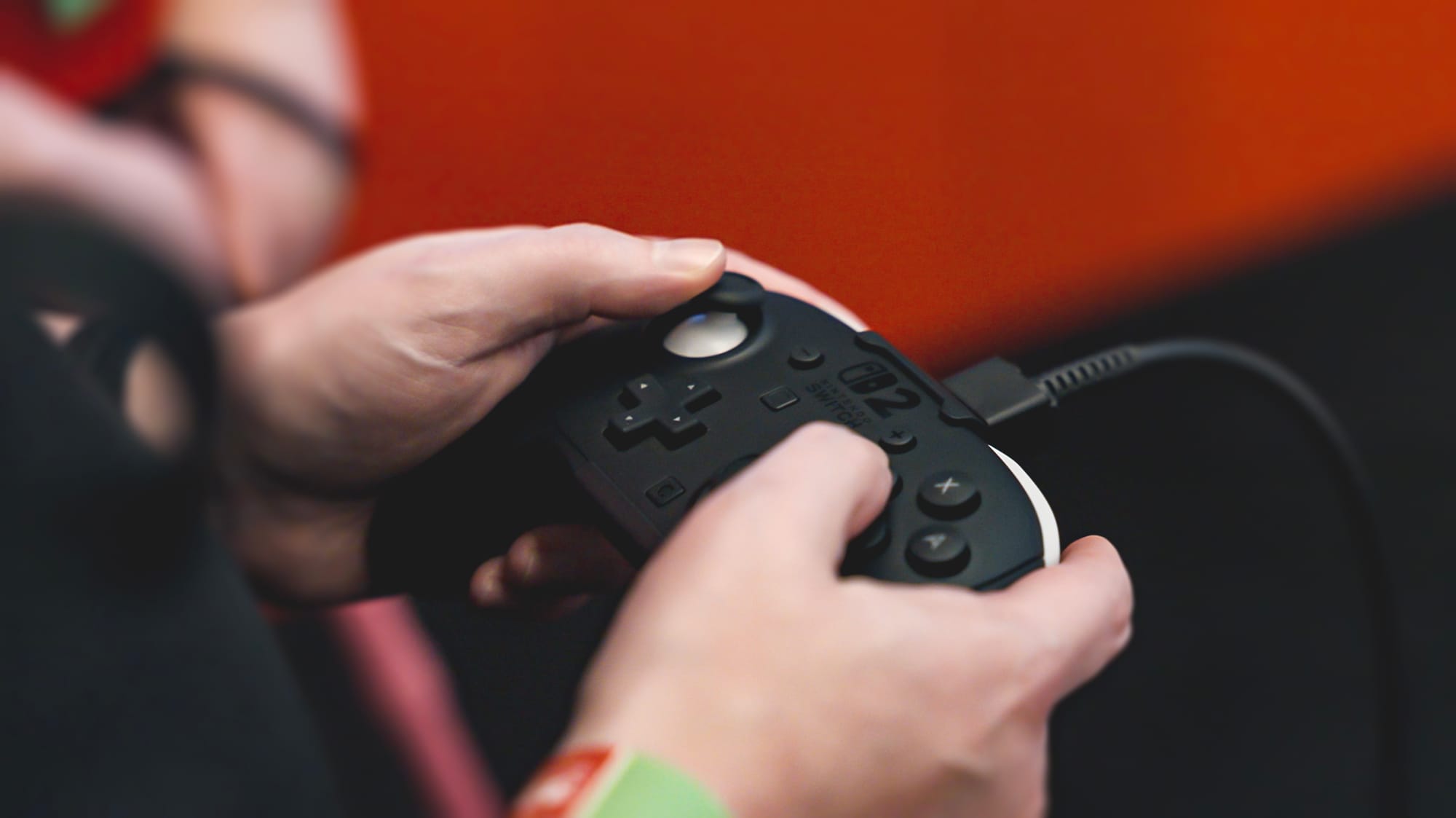
What else can I say about the hardware? The new kickstand is far tougher and can easily be set to a much wider array of angles than ever before, which bodes well for playing in tabletop mode. Oh, and one final thing that only the most die-hard Nintendo enthusiasts will care about: when you look at the Switch 2 up close, its textured surface contains little reflective flecks through the paintwork. It's a tiny detail, but when combined with the overall build quality improvements, it speaks to this sense of the Switch 2 feeling like a high-end piece of electronics. Truly lovely.
Mario Kart World
There were many games available to play during the event, both from Nintendo and several third-parties. As I mentioned at the outset, I didn't play them all; I chose specific games I wanted to spend time with (including multiple sessions with Mario Kart World). Considering Mario Kart World occupied the majority of my session, let's start there.
Is this really a next-gen Mario Kart?
The first space we entered at the event was entirely dedicated to Mario Kart World (just in case you were in any doubt that this game is the jewel in the Switch 2's launch crown). Considering the monumental success of Mario Kart 8 Deluxe (which has sold nearly 70 million copies and is the highest-selling game on the original Switch), this shouldn't be too surprising. The big question, I think, is whether or not Mario Kart World represents a generational leap over its predecessor (especially given that it retails for A$109 here in Australia - which, might I remind you, is actually less than many 'digital deluxe' AAA games on competing platforms).
My first hands-on with the game involved a simple versus match. I played against my sister (and videographer) in TV mode. and then played a solo match in handheld mode.
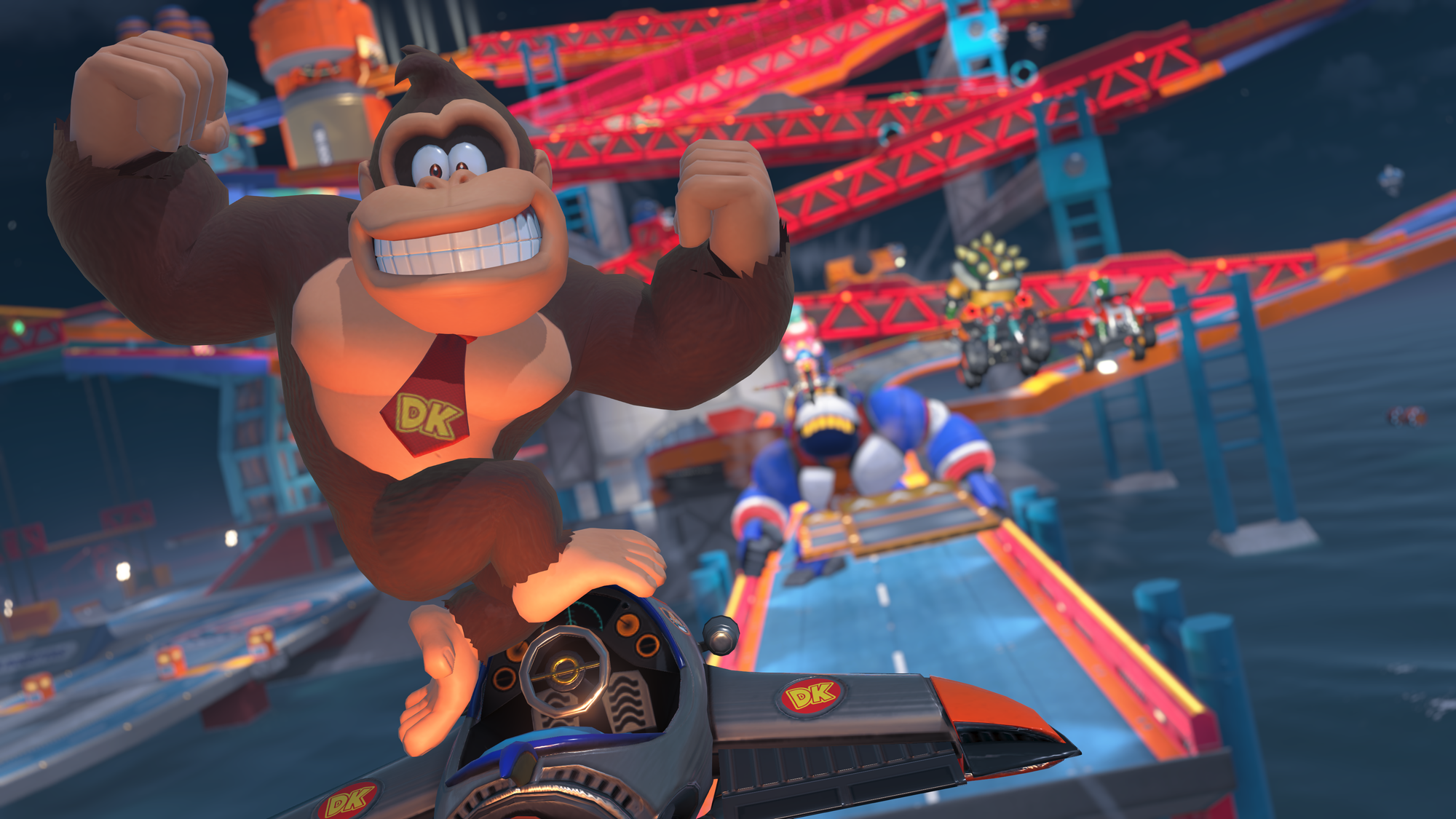
The first match took place on an incredible new course - pictured above - which is based on the original Donkey Kong arcade game. The track consisted of sharply rising long straights (sitting atop the iconic red girders) connected by sharp hairpin bends. Bathed in atmospheric lighting and dripping with vivid colour, this night race felt like a wonderful showcase for the sheer creativity and attention to detail in Mario Kart World. Battling our way to the finish line didn't just mean out-racing 22 other opponents (yes, Mario Kart World supports twice as many players as previous editions); we also had to contend with environmental obstacles in the form of massive barrels rolling down from above. Mario Kart games have always included these kinds of obstacles but I'd say Mario Kart World takes this concept to a new level. Every course I played felt far more "alive" than in previous games, in the sense that there's always a lot going on beyond the direct opponents you're trying to beat. It's important to remember that the courses in Mario Kart World don't exist in completely isolated instances; they actually occupy physical space within a much larger open world. And so, when you're racing through a course, you'll actually see this world in the background. Importantly, the world isn't just some static backdrop; it's actually a living, breathing place where all sorts of interesting stuff is going on, completely unrelated to the race at hand. But I'll touch on that a little more when I talk about the Knockout Tour mode.
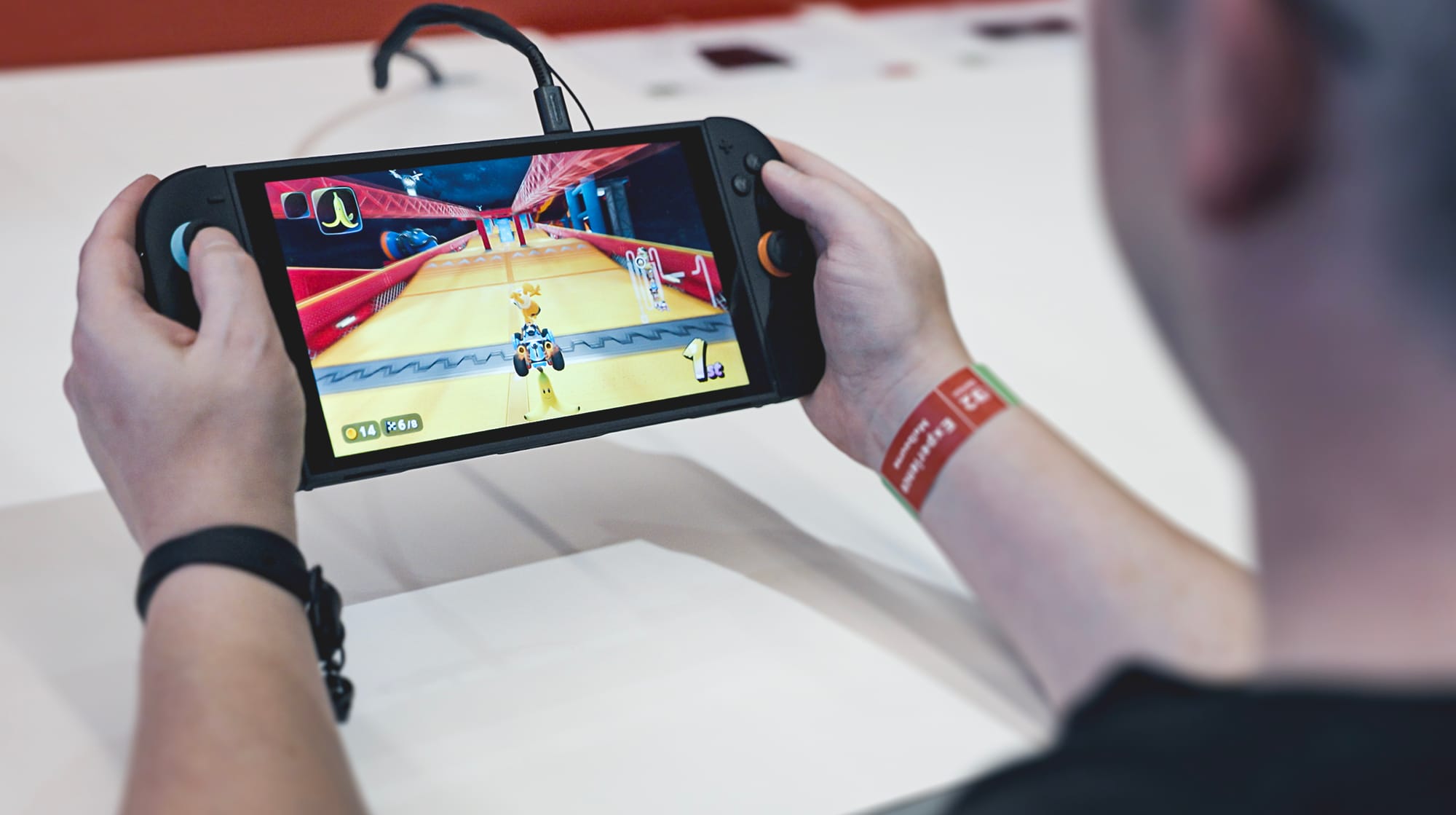
Once you get your hands on the game yourself, you'll quickly realise that Mario Kart World is a pretty dramatic leap forward across a number of fronts.
For now, I just want to re-emphasise that one of Mario Kart World's distinguishing features is its extraordinary attention to detail. A great example is the animation of the vehicles and riders, which is dramatically more sophisticated than anything we've seen in the series before. Riders actively look around and follow opponents with their heads/eyes, they gesticulate wildly in response to what's happening around them (or to them), and the vehicles are loaded with personality (wheels deform and bounce, frames stretch and creak, and the physical impact of collisions both looks and feels far more impactful thanks to dramatically improved animation combined with noticeably powerful force feedback). In addition, Mario Kart World introduces day/night cycles and dynamic weather, which are also major firsts for the franchise, and which contribute to the sense of a living, breathing world that exists independently of the player.
Early video footage of Mario Kart World might have left you with the impression that it represents more of an iterative step forward. But I'm very pleased to say that once you get your hands on the game yourself, you'll quickly realise that Mario Kart World is a pretty dramatic leap forward across a number of fronts. I think the biggest drawcard is definitely Knockout Tour, but before I get to that, let me briefly discuss how the game feels in handheld mode.
No OLED? No problem!
This vibrancy translates well to the LCD screen in handheld mode, too. Some have expressed concern about the apparent downgrade from OLED to LCD technology. I must admit that I initially shared this concern; I've become so used to the Switch OLED's delicious inky blacks and sharp contrast. Thankfully, though, the new higher-resolution (720p) LCD screen on the Switch 2 more than does the job. The combined resolution bump and bigger display make quite a difference without sacrificing contrast, vivid colour, or smooth motion. I'm not an expert on the underlying technology, but I can assure you that there's no sense in which this screen feels like a backwards step from the existing OLED model.
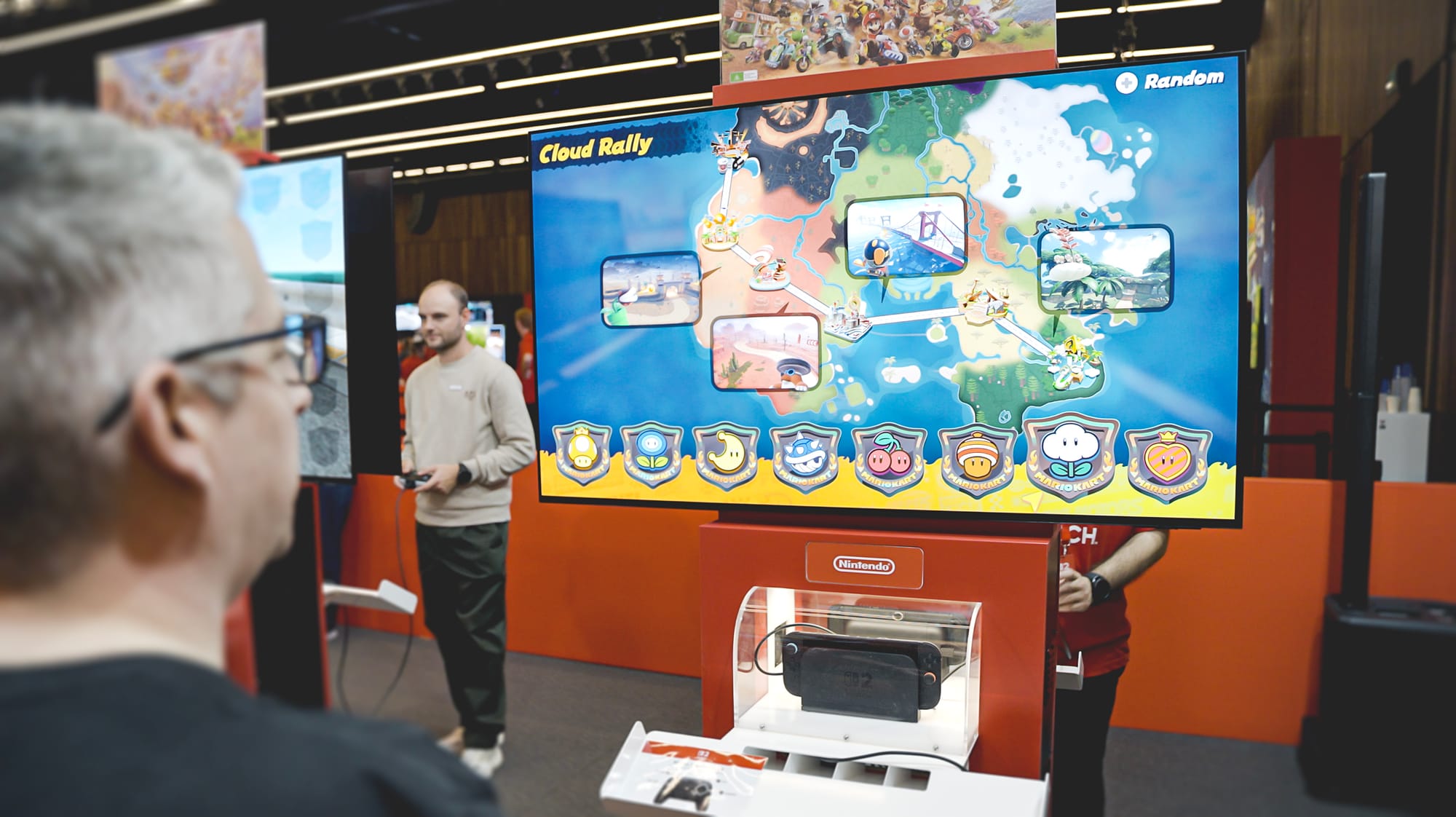
I'm obsessed with Knockout Tour
After playing a couple of individual matches, I dived into the mode I was most eager to try: Knockout Tour. This is really where Mario Kart World feels radically different from anything that came before.
Much like other online modes, players are asked to vote for a particular tour, which is a little bit like voting for a tournament cup. Each tour consists of multiple courses played sequentially. What's different here is that the entire tour is essentially one long continuous race. As mentioned above, individual courses don't exist in silos; they are seamlessly embedded into a broader open world. This means that once you start a tour, there are no loading screens or pauses between courses. As you finish one course, you immediately drive out of that course into the open world and head to the next one.
Players kick off each new course with a rolling start based on their order of arrival. The mode is called "Knockout Tour" because the entire tour - including all the open-world traversal - incorporates gates that players must pass through to remain in the game. Each gate sets a particular rank; players below this rank are knocked out of the race. So for example, early gates might say "18th or above" - if you're 19th or below, you're out. As you progress further, that minimum rank will steadily rise, meaning it's essential to keep up with the front of the pack to survive. Although this might sound punishing, it also provides a great opportunity for players who might have fallen behind in one course; there's always the possibility of clawing your way back to pole position in the open-world segments.

Like previous entries in the series, Mario Kart World maintains a sense of frantic competitiveness by granting players at the back of the pack more powerful items, ensuring that ranks/positions don't become entrenched for the entire tour. Players at the front of the pack are constantly playing defence, while those at the rear are aggressively pushing forward. This dynamic works particularly well in Knockout Tour due to the tension between the end-to-end marathon and the gate-to-gate sprints.
I'd be remiss if I didn't comment on the open world itself; you might be wondering if the open world is actually compelling on its own terms or if it's more like bland padding between courses. I'm pleased to say that the open world feels every bit as cohesive and thoughtfully designed as the individual courses. The open world is far more than just a few highways connecting courses; it very much feels like a living-breathing world with unique locales that differ greatly from one another in terms of theme and content. At one point I raced through an entire city full of traffic and pedestrians all going about their business (the city existed in the open world and not in a specific course). The city then gave way to rolling green hills rising high above the coastline, providing a more expansive view of the world and its many explorable locations. The delineation between a course and the open world is incredibly seamless from what I've seen; it's apparent that a great deal of care has been given to how these elements intertwine.
In terms of moment-to-moment gameplay, I'd say that Mario Kart World doesn't feel radically different to Mario Kart 8 Deluxe. Movement feels just as tight and precise as ever. There are certainly some new tricks and goodies here, though, including the ability to grind on rails for a speed boost along with a bunch of brand-new items. Seasoned players will be able to jump in and feel right at home, which is great because I think Mario Kart 8 Deluxe really nailed the formula in terms of gameplay feel and mechanics.
I'm reluctant to say anything too definitive about the game until we review the final version. But after spending some time with the demo across multiple modes, I came away impressed. Mario Kart World fuses the tight gameplay mechanics we've come to know and love with a truly bold re-imagining of the game's overall scope. I can see why Mario Kart World is the flagship launch game f or the Nintendo Switch 2. I think players will be pleasantly surprised with the significant new bar Nintendo has set here when they get their hands on the final product.
Part 2: Donkey Kong Bananza and Metroid Prime 4: Beyond
Part 3: Drag x Drive, Cyberpunk 2077, and More
